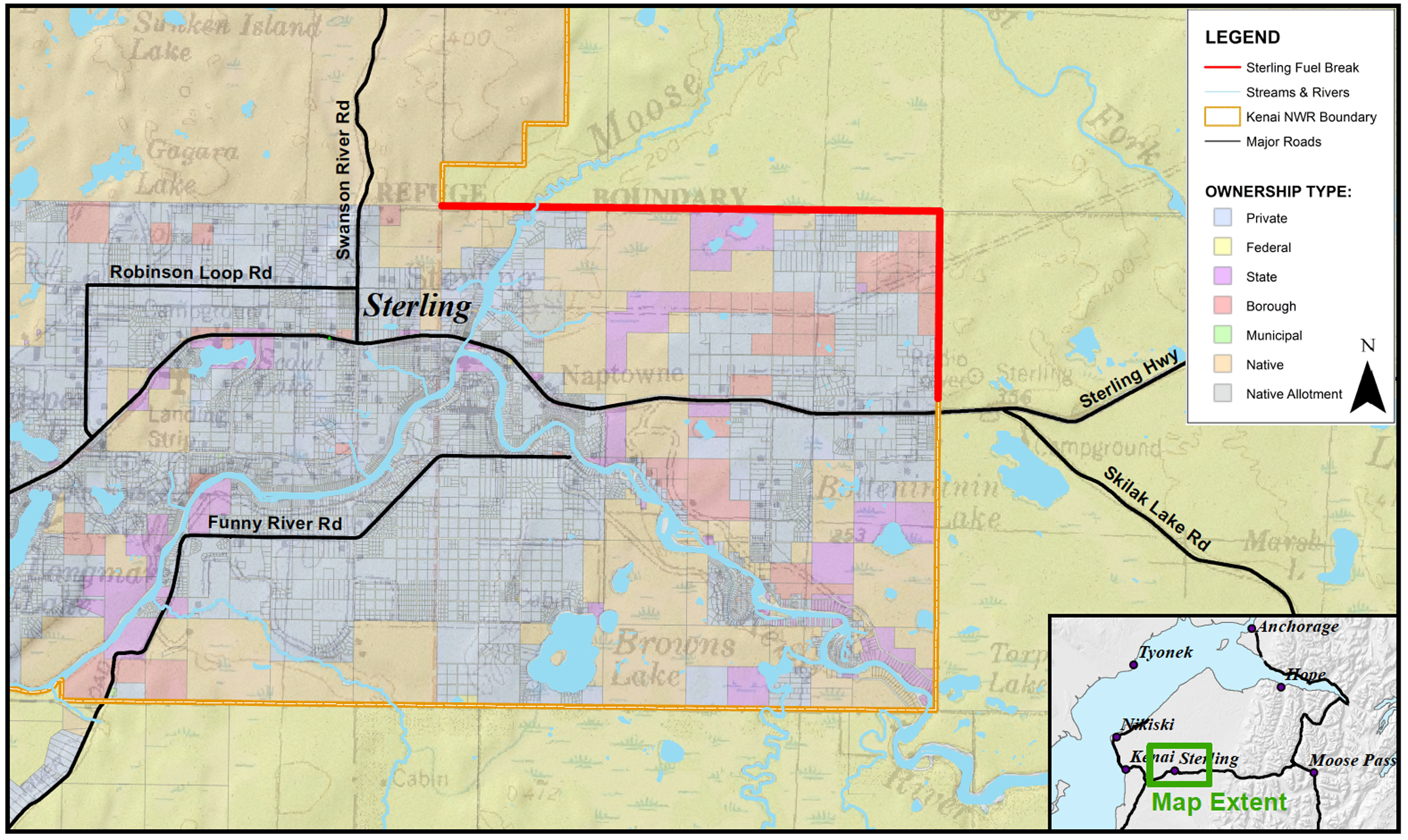A group of four government agencies and two Native corporations is planning a forestry project intended to prevent future forest fires from spreading into Sterling while allowing adjacent wilderness the benefit of renewal from periodic burns.
The Sterling Fuel Break will be a discontinuous series of forest cuttings following an 8.5-mile section of Sterling’s border with the Kenai National Wildlife Refuge, near the Sterling Highway around mile 76.
The fuel break is meant to stop forest fires from reaching Sterling by removing the most flammable trees and other vegetation from the surrounding woods, according to a release from the groups.
The break will consist of different types of forest treatment, ranging from sections where underbrush will be removed by hand and with chainsaws to sections cleared with heavy machinery, according to the release. Area Forester Hans Rinke of the Alaska Department of Natural Resources Division of Forestry said the break will vary between 200 and 300 feet wide, depending on “topography and fuel type.”
Refuge Fire Management Officer Kristi Bulock said concentrations of black spruce — a highly flammable tree — will be thinned or removed, and remaining trees will be limbed up to 6 feet, making it less likely a fire will spread off the ground. Keeping less-flammable deciduous trees such as aspens and birches standing in the firebreak provides shade that helps retain ground moisture, an additional fire-suppressing factor, Bulock said.
The Chugachmiut Native corporation’s Yukon Fire crew will work on the fire break alongside crews from the refuge and contractors from the Division of Forestry, whom Rinke said are still bidding.
Aside from Division of Forestry, Chugachmiut, and the refuge (the three groups contributing planning and labor), the other three agencies in the project are involved as land owners. All the land north and east of the fuel break — outside Sterling — belongs to the refuge while land on the Sterling side of the break belongs to the Alaska Mental Health trust, the Kenai Peninsula Borough, Cook Inlet Region Incorporated, and private owners.
According to a press release from the planning groups, work with heavy machinery will take place mostly in the winter to take advantage of the frozen ground. Rinke said U.S. Fish and Wildlife Service crews already started hand-cutting a portion of the break on refuge land in June, and heavier treatment will begin in late fall and continue until mid-summer next year.
“The treatment overall could take several years to implement,” Rinke said. “We’re talking several hundred acres of multiple land ownerships and we’d also like to include the public with fire-wising of homes. Really this project should never be done. It should be a project along with projects agencies and the public work on — the public in their own backyards and the agencies in agency lands — to implement fuel-reduction projects. It’s a maintenance issue.”
From the perspective of firefighting strategy, Rinke said work done on the fuel break in coming years is work that won’t have to be done hastily during an emergency.
“This project may take some time to come to fruition,” Rinke said. “In a compressed time frame it may take a week or 10 days to complete during a fire incident. We’ll already have that completed, so we’re basically buying that time to try other tactics or wait for a weather window to come. It allows you some room to maneuver.”
Reach Ben Boettger at ben.boettger@peninsulaclarion.com.

